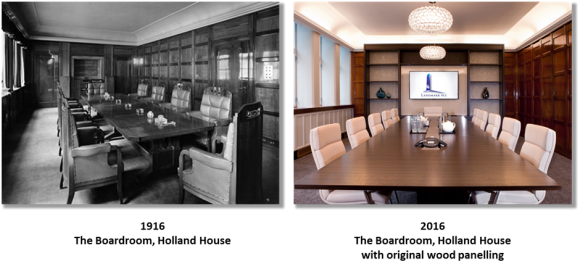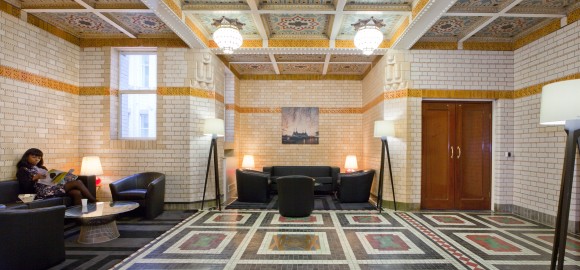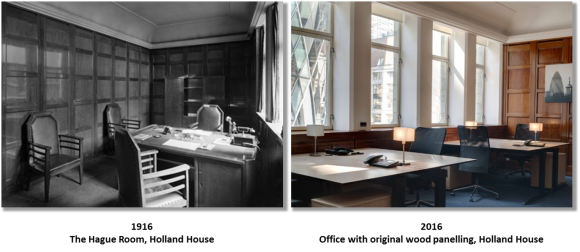- 1 Minute Read
- 28th July 2016
Bury Streets Holland House building celebrates its 100 year anniversary
A Milestone for Holland House
This year celebrates the 100th anniversary of Holland House, a revolutionary building in the history of British architecture which sits between Art Nouveau and Modernism. Built in 1916 during the dark days of the First World War, Holland House was the first steel framed building in Europe which introduced something continental and exciting into the Cityscape.
The Beginning
Initial designs were started in April 1913 and construction began just before the outbreak of the First World War. The beautiful panelled suites and meeting rooms on the first floor were made from the mahogany stripped from one of Wm. H. Muller’s ships. Berlage terminated his contract with Wm. H.Muller & Co. in 1919, which meant the remaining interior designs were built by Henry van de Velde and Bart van der Leck.

The main lobbies are clad in abstract mosaic patterns with red, green and blue colour schemes. Down in the basement, below the metaphorical water line, the bricks are glazed in rich aquamarine, which terminates in a band of deeply incised dark yellow tiles, perhaps signifying waves. If so, it is the only representational motif in the whole decorative scheme, which elsewhere is a strange but powerful blend of Mondrian and Islam.

The first offices in London
The 1920s are considered the golden age of commercial architecture in the City of London with a number of palatial new banks and company headquarters being built in Portland stone. However, Holland House sparked a new-age of modern design. In fact it wasn’t until 1986, when Richard Rogers’ Lloyds building, also referred to as the ‘inside-out building’, was unveiled, did Great Britain witness an office development which broke away from all conventions.

Modern day Holland House
Now considered one of the City’s finest locations, this Grade II listed building sits adjacent to the Gherkin, one of the City’s most widely recognised examples of contemporary architecture. Stena Realty has the freehold of the 50,000 sq ft Holland House at 1-4 Bury Street, while Landmark Plc occupies five floors of the building. Landmark Plc undertook a comprehensive restoration of the listed common parts in 2007 as well as renovation of the office areas. The building now provides commercial property space to a variety of businesses in the heart of the financial district from healthcare, legal and insurance companies. Today Holland House is regularly frequented by Dutch tourists, who like to witness the work of their native Berlage first-hand.
Written By Catrin Jenkins